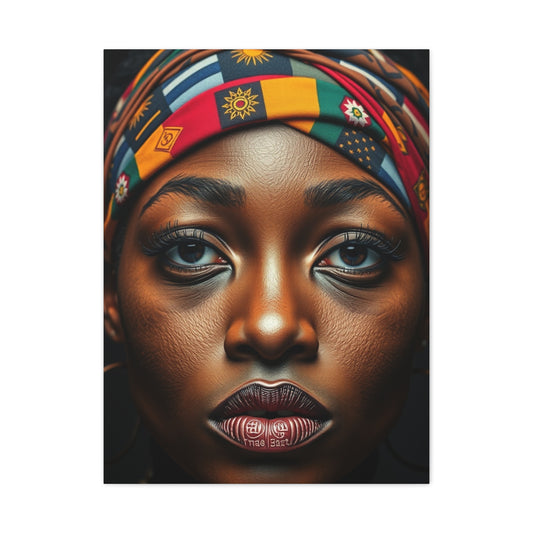Black History Month Wall Art: Celebrating African American Heritage Through Creative Expression
February marks a momentous period in American culture when communities across the nation unite to commemorate the extraordinary contributions, resilience, and achievements of African Americans throughout history. During this significant observance, artistic expressions emerge as powerful vehicles for storytelling, education, and cultural preservation. The creation of meaningful wall art during this period serves not merely as decoration, but as a profound testament to the enduring legacy of Black excellence that transcends temporal boundaries.
The genesis of commemorative artwork often springs from unexpected sources of inspiration. Within corporate environments, diversity and inclusion initiatives frequently spark creative endeavors that transform ordinary spaces into galleries of cultural celebration. These artistic manifestations represent more than aesthetic enhancements; they embody the collective consciousness of organizations committed to honoring the multifaceted tapestry of African American heritage.
Contemporary workplace environments increasingly recognize the transformative power of visual storytelling in fostering inclusive atmospheres. When employees encounter images of pioneering Black leaders, inventors, artists, and activists adorning workplace walls, these visual narratives serve as daily reminders of the remarkable achievements that have shaped American society. Such artistic installations create dialogue opportunities, educational moments, and spaces for reflection that extend far beyond the confines of a single month.
The Evolution of Commemorative Artistic Expression in Professional Environments
The tradition of creating specialized artwork for African American heritage celebrations has undergone a remarkable transformation over the past several decades. Once centered primarily on conventional portraiture or historical reproductions, commemorative art has now expanded into a wide spectrum of media and forms. Contemporary interpretations often include mixed media collages, digital installations, large-scale murals, and interactive displays that engage audiences through visual, tactile, and even auditory dimensions. This expansion reflects the dynamic and ever-evolving nature of Black culture and its profound influence on American society, ensuring that commemoration is not static but an active, living dialogue between past, present, and future.
Professional print shops, creative studios, and even internal design departments within organizations have become unlikely but significant sanctuaries for innovation during Black History Month and beyond. Skilled craftspeople, graphic designers, and digital artists—driven by both personal passion and institutional support—transform raw materials into meaningful tributes. These creations serve not only as art but as powerful statements of recognition and respect. The technical expertise required to produce such works combines artistic vision with industrial precision, as modern commemorative pieces often require mastery of advanced printing technology, color calibration, digital rendering, and fabrication methods. This merging of artistry and technical craftsmanship highlights how commemoration can flourish even in professional or corporate environments.
Equally important is the role of collaboration in shaping these artistic projects. Workplace diversity councils and employee resource groups frequently provide the conceptual framework, articulating philosophies that emphasize cultural appreciation throughout the year rather than limiting it to February observances. These guiding principles encourage artistic expressions that go beyond celebratory posters or banners, inspiring more innovative and inclusive approaches. For instance, commemorative installations might incorporate layered visual storytelling, historical timelines, or symbolic imagery that reflects resilience, progress, and unity. By blending text elements, photography, and design principles, these works communicate not only cultural pride but also messages of solidarity and inclusion that resonate with diverse audiences.
Furthermore, the evolution of commemorative art in professional environments mirrors broader societal changes in how organizations approach diversity, equity, and inclusion. Rather than treating such initiatives as temporary gestures, companies increasingly view them as integral to workplace culture and community engagement. This shift creates fertile ground for artists and craftspeople to experiment, collaborate, and create works that celebrate heritage while also reinforcing the values of respect, representation, and shared humanity. In this way, commemorative artistic expression continues to grow—not just as a reflection of heritage but as a living practice that shapes and enriches professional environments.
Understanding the Technical Craftsmanship Behind Commemorative Wall Art
The creation of commemorative wall art is not simply an act of visual design—it is a complex process that merges artistry with technical precision. Professional-grade commemorative artwork, often displayed in public spaces, educational institutions, or corporate environments, requires a deep understanding of printing technologies, material sciences, and design principles. Each step of production must be meticulously planned to ensure that the final piece conveys both aesthetic beauty and lasting durability.
Modern print shops now operate with cutting-edge technology that enables them to produce high-resolution reproductions across a wide range of substrates. Printers capable of delivering microscopic detail allow historical photographs, portraits, and symbolic artwork to be rendered with striking clarity. This ensures that every subtle texture—from fabric folds to architectural detailing—translates faithfully onto the chosen medium. For large-scale installations such as banners or murals, resolution and scalability are particularly critical, as images must maintain sharpness whether viewed up close or from a distance.
Color management plays a central role in this technical craftsmanship. Reproducing historical imagery demands not just accuracy, but sensitivity. A skilled colorist utilizes calibrated monitors and software to preserve tonal integrity, ensuring that skin tones, cultural garments, and symbolic motifs remain true to their sources. This precision prevents distortions that could undermine the authenticity or dignity of the individuals and events being commemorated. In essence, accurate color reproduction transforms a print into a respectful preservation of history.
Material selection is another decisive factor that shapes the quality of commemorative wall art. While paper may suffice for temporary displays, premium substrates such as canvas, vinyl, acrylic, or fabric blends provide greater longevity and impact. Canvas evokes a fine-art tradition, lending gravitas and texture, whereas vinyl and fabric options excel in durability and flexibility, especially for outdoor use. Environmental considerations—exposure to sunlight, humidity, or fluctuating temperatures—further guide the choice of substrate. Protective coatings such as UV laminates, anti-scratch films, and water-resistant treatments extend the life of the piece while maintaining its vibrancy.
Mounting systems and finishing techniques also influence the overall impression of commemorative artwork. Options range from gallery-style wraps and sleek aluminum framing to adhesive wall installations designed for large architectural spaces. Each decision impacts not only the durability but also the way viewers engage with the piece. Lighting conditions are likewise crucial: proper illumination can elevate the emotional resonance of commemorative art, while poor lighting may diminish its visibility and symbolic strength.
Ultimately, the production of commemorative wall art reflects a delicate balance between artistic intent and technical execution. By merging advanced print technology, thoughtful material selection, and meticulous finishing, professionals create pieces that honor cultural legacies while withstanding the test of time. This synthesis of craft ensures that commemorative installations continue to inspire, educate, and resonate with audiences for generations.
Exploring the Cultural Significance of Visual Storytelling Through Historical Figures
Commemorative artwork is far more than decoration; it functions as a living archive of collective memory and cultural identity. Through visual storytelling, artists are able to capture the essence of historical figures and present them in ways that communicate values, aspirations, and legacies across time. The selection of such figures is never incidental—it reflects deliberate choices about whose voices, achievements, and struggles deserve recognition within a particular cultural or institutional setting. In this sense, commemorative art is a form of curation that both preserves the past and shapes the narratives of the present.
When artists portray multiple historical personalities within a single composition, the result is often a powerful dialogue between eras. These juxtapositions highlight continuities and contrasts across history, reminding viewers that progress is rarely linear but instead built upon the sacrifices and breakthroughs of earlier generations. For example, placing a civil rights leader alongside a contemporary political figure creates a visual bridge that underscores the endurance of shared ideals such as justice, equality, and resilience. Such symbolic arrangements encourage audiences to draw connections between historical milestones and modern challenges, deepening their appreciation of cultural continuity.
In the context of African American representation, workplace installations and public displays carry particularly profound meaning. Honoring pioneering figures in art not only acknowledges their invaluable contributions but also reclaims space where their influence may have historically been overlooked or diminished. Recognizing achievements in fields such as science, literature, politics, entertainment, and social justice highlights the sheer breadth of Black excellence and reinforces the message that these contributions are foundational to American society as a whole. These artworks serve as daily reminders of perseverance, creativity, and leadership, offering both affirmation and inspiration to those who encounter them.
Modern commemorative art often goes beyond visual portraiture to include textual elements that enrich interpretation. Inspirational quotations, key biographical details, or excerpts from speeches and writings provide viewers with context, allowing them to engage intellectually and emotionally with the subject. The integration of typography with photographic or illustrative design must be executed with precision to achieve both clarity and aesthetic harmony. When done well, this fusion enhances the educational impact of the artwork while maintaining its visual elegance.
Ultimately, commemorative artwork featuring historical figures functions as both tribute and teaching tool. It keeps legacies alive, sparks dialogue across generations, and fosters a culture of remembrance and aspiration. By merging artistic creativity with cultural storytelling, these visual tributes ensure that the struggles and triumphs of the past continue to inspire future progress.
Displays and Employee Engagement
The role of workplace displays in shaping employee engagement extends far beyond decoration. In modern organizational psychology, there is growing recognition that visual environments carry symbolic meaning that influences employee attitudes, behaviors, and long-term connections with their employers. When employees walk into an office, factory floor, or shared workspace and see imagery that reflects their cultural heritage, community stories, or shared organizational values, they are more likely to feel recognized and valued. This sense of validation directly supports improved morale, heightened productivity, and stronger commitment to the organization’s mission.
One of the most profound effects of incorporating culturally diverse and commemorative artwork into the workplace is the strengthening of employee belonging. For individuals from underrepresented groups, seeing their history, culture, or identities visually acknowledged within professional spaces helps mitigate feelings of isolation or marginalization. Instead of being passive participants within a corporate environment, these employees begin to see themselves as integral contributors whose presence is celebrated. The psychological benefits of such validation ripple outward, influencing not only individual satisfaction but also overall team cohesion, collaboration, and creativity.
Moreover, displays of inclusive artwork act as visible statements of organizational values. They demonstrate that diversity, equity, and inclusion are not abstract corporate policies confined to mission statements but are actively embodied in the physical environment. Employees interpret these visual cues as signs of authenticity in leadership’s commitment to fairness and representation. This perception can be a deciding factor in whether staff members envision long-term career growth within the company or seek opportunities elsewhere. In an era where retention and engagement are critical challenges for employers, such seemingly simple design choices can play a strategic role in shaping workforce stability.
The placement of these displays also matters significantly. Artwork installed in high-traffic or communal areas—such as lobbies, break rooms, or collaborative spaces—maximizes visibility and impact. By positioning commemorative pieces where they can spark daily interactions, organizations turn them into ongoing cultural touchpoints that reinforce learning, empathy, and dialogue across diverse groups of employees.
Equally important is the process of creation itself. When employees are invited to participate in designing or curating commemorative displays, the benefits multiply. Opportunities to contribute ideas, share personal stories, or assist in the creative process deepen workers’ emotional investment in both the artwork and the organizational culture it represents. These participatory projects often cut across departmental boundaries, fostering unexpected collaborations and building new relationships. In turn, the collective ownership of these displays strengthens workplace bonds, creating narratives that employees share with pride.
Ultimately, commemorative displays in professional environments are more than decorative features—they are strategic tools for cultivating engagement, unity, and a thriving organizational culture that values every voice.
Origins and Evolution of Black History Recognition
The establishment of Black History Month in 1976 marked the culmination of decades of advocacy for the formal acknowledgment of African American contributions to national development. Its roots trace back to 1926 when historian Carter G. Woodson initiated Negro History Week, aiming to promote awareness of African American achievements in education, politics, arts, and society at large. Over time, this week-long observance evolved into a month-long celebration, reflecting society’s growing acknowledgment of the importance of inclusive historical narratives. This historical progression illustrates a shift from marginal recognition to a mainstream cultural and educational emphasis, highlighting the need to correct historical omissions and celebrate contributions that have shaped American society.
Contemporary interpretations of African American heritage celebrations increasingly advocate for ongoing engagement rather than limiting recognition to February. This broader approach underscores the understanding that cultural, social, and intellectual contributions of African Americans are continuous and merit recognition throughout the year. Modern commemorative artwork often embodies this philosophy by blending traditional observance elements with messages that encourage year-round reflection, learning, and celebration. Through murals, exhibitions, and digital media, artists integrate historical context with contemporary themes, ensuring that commemorative works are both respectful of tradition and relevant to present-day audiences.
The digital era has dramatically expanded the scope and reach of heritage celebrations. Artists and educators now have unprecedented access to extensive archives of photographs, recordings, documents, and oral histories that were previously limited to scholars or specialized collections. Digital tools allow these materials to be incorporated into interactive installations, virtual galleries, and multimedia presentations, enabling more immersive and comprehensive storytelling. This access empowers artists to produce nuanced interpretations of historical figures, cultural movements, and community milestones, offering audiences deeper insight into African American history while fostering engagement across generations and geographies.
The relevance of African American heritage celebrations today extends beyond education; they serve as platforms for dialogue, reflection, and community building. Artistic expressions, whether through traditional painting, digital media, or mixed media installations, connect viewers to historical legacies while addressing current social issues. By combining historical context, contemporary perspectives, and innovative presentation methods, these commemorations reinforce cultural pride, promote awareness, and inspire continued recognition of African American contributions to society.
Design Principles and Aesthetic Considerations in Commemorative Artwork
Creating effective commemorative artwork requires a careful balance of multiple design objectives, including historical accuracy, visual impact, educational value, and aesthetic appeal. Unlike purely decorative pieces, commemorative works must convey meaningful narratives while capturing attention and evoking emotion. Achieving this balance necessitates a deep understanding of visual communication principles, as designers guide viewers through layered compositions that integrate images, text, symbols, and graphic elements. Strategic application of visual hierarchy ensures that key subjects or messages are immediately recognized, while secondary elements provide contextual richness, allowing audiences to engage both intellectually and emotionally.
The use of color is particularly critical in commemorative artwork. Color palettes are chosen not only for aesthetic harmony but also for symbolic resonance. Designers often employ contrasting or complementary colors to highlight specific elements, direct attention, or evoke emotional responses. Typography is similarly important; typefaces must be legible across viewing distances and harmonize with other visual elements while reinforcing the tone and cultural significance of the work. Spatial relationships—including the arrangement of images, text blocks, and background elements—further support clarity and cohesion, creating compositions that are visually compelling and informative at the same time.
Scale and proportion are key considerations, particularly in collages or multi-element compositions. The relative size of portraits, textual inscriptions, and decorative motifs must be carefully calibrated to ensure equitable representation and maintain visual clarity. Elements that are too large may dominate the composition, while elements that are too small risk being overlooked. Professional designers often rely on classical compositional strategies such as the golden ratio, the rule of thirds, and dynamic symmetry to achieve visual balance, guiding the viewer’s eye naturally through the piece.
Cultural sensitivity is another essential aspect of commemorative design. Artists and designers must carefully consider color symbolism, imagery, and textual content to ensure that works honor the dignity of subjects and resonate appropriately with diverse audiences. This requires thorough research into historical contexts, contemporary cultural attitudes, and potential interpretive variations, as even subtle design choices can influence audience perception. For example, the inclusion of specific symbols or gestures may carry different connotations across communities, making careful consultation and thoughtful planning essential.
Ultimately, successful commemorative artwork is the product of meticulous planning, research, and execution. By harmonizing historical accuracy, cultural sensitivity, and visual principles, designers create works that are not only educational and informative but also aesthetically compelling and emotionally resonant. Such thoughtful designs ensure that commemorative pieces function as enduring tributes that inspire reflection, appreciation, and meaningful engagement across diverse audiences.
The Role of Print Technology in Modern Commemorative Art Production
Advanced printing technologies have revolutionized the production capabilities for commemorative artwork, enabling unprecedented levels of detail, color accuracy, and material versatility. Large-format printers equipped with archival inks produce museum-quality reproductions suitable for permanent installation in professional environments. These technological capabilities allow artists to work with confidence that their creative visions will be accurately translated into final products.
Digital workflow management systems streamline the production process from initial concept through final installation. Color management protocols ensure consistency across multiple print runs while file preparation standards maintain image quality throughout the production pipeline. Quality control procedures involving color proofing, material testing, and dimensional verification guarantee that finished products meet professional standards.
The integration of finishing techniques including lamination, mounting, and framing significantly influences the perceived value and longevity of commemorative installations. Professional finishing services employ specialized equipment and materials designed to protect artwork from environmental degradation while enhancing visual presentation. These post-production processes require skilled technicians who understand the interactions between various materials and environmental conditions.
Building Inclusive Workplace Cultures Through Visual Storytelling
The strategic implementation of commemorative artwork within professional environments contributes to broader diversity and inclusion initiatives by creating tangible demonstrations of organizational values. These visual elements serve as conversation starters, educational tools, and symbolic representations of institutional commitment to cultural appreciation. The cumulative impact of such installations influences organizational culture development over extended periods.
Employee feedback regarding commemorative artwork installations provides valuable insights into workforce perspectives on diversity initiatives. Positive responses often indicate successful cultural messaging while critical feedback reveals opportunities for improvement in future projects. Organizations that actively solicit and respond to employee input demonstrate authentic commitment to inclusive culture development.
The maintenance and evolution of commemorative displays require ongoing attention to ensure continued relevance and visual appeal. Regular updates incorporating new historical discoveries, contemporary achievements, and changing organizational priorities maintain viewer interest while demonstrating sustained commitment to cultural celebration. This evolutionary approach prevents installations from becoming static museum pieces by maintaining dynamic engagement with current events and emerging cultural narratives.
Professional Development Opportunities in Commemorative Art Creation
The production of commemorative artwork within organizational contexts creates unique professional development opportunities for employees across various skill levels and departmental affiliations. Print shop technicians develop advanced artistic sensibilities while honing technical expertise in color management, substrate selection, and finishing techniques. These expanded skill sets enhance career advancement prospects while contributing to organizational creative capabilities.
Cross-departmental collaboration on commemorative projects fosters relationship building between employees who might not otherwise interact professionally. Marketing specialists contribute messaging expertise while human resources professionals provide cultural sensitivity guidance and historical research support. These collaborative experiences develop soft skills including communication, project management, and cultural competency that benefit participants throughout their careers.
The documentation and portfolio development aspects of commemorative art projects provide employees with tangible demonstration materials for future career advancement. High-quality photographs of completed installations, project timelines, and impact assessments create compelling narratives for performance reviews, promotion applications, and external job searches. These professional artifacts validate creative contributions while demonstrating commitment to organizational values.
Measuring the Impact and Effectiveness of Commemorative Art Installations
Quantitative assessment of commemorative artwork effectiveness requires establishment of baseline metrics and ongoing monitoring systems. Employee engagement surveys, workspace utilization studies, and diversity climate assessments provide measurable data regarding installation impact. These empirical approaches complement qualitative feedback to create comprehensive understanding of artwork effectiveness.
Longitudinal studies tracking employee attitudes, retention rates, and recruitment success following commemorative art installations reveal sustained organizational benefits. Positive correlations between inclusive visual environments and employee satisfaction scores validate investments in commemorative artwork while justifying continued support for similar initiatives. These research findings contribute to best practice development for diversity and inclusion programming.
The broader community impact of workplace commemorative installations extends beyond organizational boundaries through visitor impressions, social media sharing, and public relations opportunities. External recognition of organizational diversity commitments enhances reputation while contributing to industry leadership in inclusive culture development. These secondary benefits multiply the return on investment for commemorative art projects.
Resource Management and Budget Considerations for Commemorative Projects
Successful commemorative art projects require careful resource allocation across multiple budget categories including materials, labor, equipment, and installation costs. Professional-grade substrates, archival inks, and specialized finishing services represent significant expenses that must be balanced against available funding while maintaining quality standards. Strategic procurement practices and vendor relationships help organizations maximize value while supporting local creative communities.
Timeline management becomes critical when coordinating commemorative projects with heritage month observances or other significant dates. Print production schedules, approval processes, and installation logistics must account for potential delays while ensuring timely completion. Early project initiation and contingency planning prevent last-minute complications that could compromise quality or deadline adherence.
The scalability of commemorative art projects allows organizations to align scope with available resources while maintaining meaningful impact. Modest installations featuring single-panel displays can generate significant employee engagement when designed and positioned effectively. Larger multi-panel installations create greater visual impact but require proportional increases in budget allocation and project management complexity.
Future Trends and Innovations in Commemorative Art Technology
Emerging technologies including augmented reality, interactive displays, and smart materials promise to transform commemorative art creation and viewer engagement. QR codes embedded within traditional artwork enable smartphone users to access additional historical information, video content, and interactive educational materials. These hybrid approaches combine the visual impact of physical installations with the expandable content capabilities of digital platforms.
Artificial intelligence applications in image processing, color correction, and layout optimization streamline production workflows while enhancing creative possibilities. Machine learning algorithms can analyze historical photographs to suggest optimal reproduction parameters while automated design systems generate initial layout concepts for human refinement. These technological tools augment rather than replace human creativity while improving efficiency and consistency.
Sustainable materials and production processes increasingly influence commemorative art creation as organizations prioritize environmental responsibility. Biodegradable substrates, water-based inks, and renewable energy sources reduce environmental impact while maintaining quality standards. These eco-conscious approaches align with broader corporate sustainability initiatives while appealing to environmentally aware employees and stakeholders.
Collaborative Partnerships and Community Engagement Strategies
External partnerships with historical societies, educational institutions, and cultural organizations enrich commemorative art projects through expert knowledge, authentic artifacts, and community connections. These collaborative relationships provide access to specialized resources while ensuring historical accuracy and cultural sensitivity. Academic partnerships often include research support and educational programming that extend project impact beyond visual display.
Local artist collaborations introduce professional artistic expertise while supporting community creative economies. Commission-based partnerships with regional African American artists create authentic cultural expressions while providing economic opportunities for underrepresented creative professionals. These relationships often generate ongoing mentorship opportunities and expanded network connections for organizational employees.
Community feedback integration ensures that commemorative installations resonate with diverse audience perspectives while avoiding potential cultural misappropriation or insensitivity. Focus groups, advisory committees, and public comment periods provide structured opportunities for community input during project development. This inclusive approach demonstrates respect for cultural heritage while building broader support for organizational diversity initiatives.
Educational Integration and Learning Opportunities
Commemorative art installations serve as launching points for expanded educational programming including speaker series, workshop offerings, and mentorship programs. Guest presentations by historians, cultural experts, and community leaders complement visual displays while providing interactive learning experiences. These educational components transform static artwork into dynamic platforms for ongoing cultural dialogue and knowledge exchange.
Employee resource groups and diversity councils often coordinate educational activities surrounding commemorative installations through book clubs, film screenings, and discussion forums. These programming extensions maximize installation impact while building community around shared learning experiences. The intersection of visual art and educational programming creates memorable experiences that influence long-term cultural awareness and sensitivity.
Student engagement through internship programs, school visit opportunities, and educational partnerships extends commemorative art impact into broader community educational systems. Young people who encounter professional-quality cultural installations develop appreciation for artistic excellence while absorbing historical knowledge in visually compelling formats. These early exposures often inspire future career interests in creative fields or cultural preservation.
Quality Assurance and Professional Standards in Commemorative Production
Professional commemorative art production requires adherence to industry standards regarding color accuracy, material durability, and installation specifications. Quality assurance protocols include calibration procedures, test printing, and environmental testing to ensure finished products meet professional expectations. These standards become particularly important when installations represent organizational values and cultural heritage to diverse audiences.
Archival considerations influence material selection and production techniques to ensure long-term preservation of commemorative installations. Fade-resistant inks, UV-stable substrates, and protective coatings extend display life while maintaining visual quality over extended periods. Investment in archival materials demonstrates commitment to permanent cultural celebration rather than temporary observance.
Installation specifications including mounting systems, lighting requirements, and security considerations ensure that commemorative artwork achieves maximum impact while maintaining safety standards. Professional installation services provide expertise in structural requirements, electrical connections, and accessibility compliance. These technical considerations prevent installation problems that could diminish artwork effectiveness or create maintenance issues.
Cultural Authenticity and Historical Accuracy in Commemorative Works
Research methodology for commemorative art projects requires rigorous fact-checking, source verification, and expert consultation to ensure historical accuracy and cultural authenticity. Primary source materials, scholarly publications, and museum collections provide authoritative information for biographical details, image selection, and contextual information. This research foundation prevents historical inaccuracies that could undermine installation credibility or cultural sensitivity.
Image licensing and copyright considerations become complex when incorporating historical photographs, artistic works, or contemporary images into commemorative installations. Professional licensing agreements protect organizations from legal complications while ensuring appropriate compensation for rights holders. Public domain resources and creative commons materials provide cost-effective alternatives while maintaining quality standards.
Cultural consultation with African American community leaders, historians, and cultural experts validates artistic choices while ensuring respectful representation. These advisory relationships provide ongoing guidance throughout project development and installation phases. External validation demonstrates organizational commitment to authentic cultural celebration while building community trust and support.
Technology Integration and Digital Enhancement Strategies
Interactive elements including touchscreen displays, audio components, and digital slideshow capabilities transform traditional commemorative installations into multimedia experiences. These technological enhancements provide opportunities for deeper engagement while accommodating different learning styles and accessibility needs. Integration planning must consider maintenance requirements, user experience design, and content management systems.
Social media integration through hashtag campaigns, photo opportunities, and shareable content extends commemorative art impact beyond physical installation boundaries. Strategic social media planning includes content calendars, engagement strategies, and measurement frameworks to maximize online reach while maintaining message authenticity. These digital extensions create virtual communities around commemorative installations.
Documentation systems including photography, videography, and written records preserve project development processes while creating resources for future initiatives. Comprehensive documentation enables replication of successful approaches while identifying improvement opportunities for subsequent projects. These archives become valuable organizational knowledge assets while contributing to diversity and inclusion best practice development.
Conclusion
The creation of Black History Month wall art represents far more than a simple commemorative gesture; it embodies a profound commitment to cultural celebration, educational enrichment, and inclusive workplace development that extends throughout the entire year. The transformative power of thoughtfully designed commemorative installations lies not merely in their aesthetic appeal, but in their capacity to spark meaningful conversations, inspire personal reflection, and foster deeper understanding of the remarkable contributions African Americans have made to our collective national narrative.
Professional environments that embrace the creation of culturally significant artwork demonstrate authentic commitment to diversity and inclusion principles that resonate with employees across all demographic backgrounds. The technical expertise required to produce high-quality commemorative displays showcases the intersection of artistic vision and mechanical precision, creating opportunities for skill development and creative expression within traditionally industrial settings. These projects exemplify how organizational values can be translated into tangible, visually compelling expressions that influence workplace culture on a daily basis.
The collaborative nature of commemorative art creation brings together diverse skill sets, departmental perspectives, and personal experiences to produce unified tributes that reflect collective organizational identity. From initial conceptualization through final installation, these projects require coordination between creative professionals, technical specialists, and cultural advisors who ensure historical accuracy and cultural sensitivity. The resulting installations serve as permanent testaments to the power of collaborative effort in achieving meaningful cultural celebration.
The educational impact of commemorative wall art extends beyond immediate viewer engagement to influence long-term cultural awareness and historical understanding. When workplace walls feature portraits of pioneering scientists, courageous civil rights leaders, innovative entrepreneurs, and creative artists, these visual narratives provide daily reminders of excellence, perseverance, and achievement that transcend racial boundaries while celebrating specifically African American contributions. The cumulative effect of sustained exposure to these positive images contributes to workplace cultures that value diversity, respect heritage, and encourage continued excellence across all employee populations.
Contemporary approaches to commemorative art production leverage advanced printing technologies, sustainable materials, and innovative design strategies to create installations that meet professional standards while maintaining environmental responsibility. The technical capabilities available to modern print shops enable unprecedented levels of detail, color accuracy, and durability that ensure commemorative installations maintain their impact over extended display periods. These technological advantages allow artists to realize their creative visions with confidence while organizations benefit from cost-effective solutions that provide lasting value.
The measurement and evaluation of commemorative art effectiveness provides valuable insights into organizational culture development and employee engagement levels. Quantitative assessments including engagement surveys and retention statistics complement qualitative feedback to create comprehensive understanding of installation impact. These evaluation processes validate investments in commemorative artwork while identifying opportunities for continuous improvement in future projects. The data-driven approach to cultural programming demonstrates organizational commitment to evidence-based diversity and inclusion strategies.
Future innovations in commemorative art technology promise even more engaging and educational experiences through interactive displays, augmented reality applications, and multimedia integration. These emerging capabilities will enable organizations to create dynamic installations that evolve with changing cultural landscapes while maintaining respect for historical foundations. The integration of traditional artistic techniques with cutting-edge technology represents the continuing evolution of cultural celebration in professional environments.
The legacy of commemorative art installations extends beyond their immediate organizational impact to influence broader community understanding and appreciation of African American heritage. These workplace tributes serve as models for other organizations while contributing to societal progress toward more inclusive recognition of diverse cultural contributions. The ripple effects of individual installations multiply through social media sharing, visitor impressions, and industry best practice development that spreads positive influence across multiple organizations and communities.
Ultimately, the creation of Black History Month wall art exemplifies the transformative potential of combining artistic excellence with cultural celebration in ways that benefit individuals, organizations, and society as a whole, ensuring that the remarkable achievements of African Americans continue to inspire excellence and appreciation throughout every month of the year.












